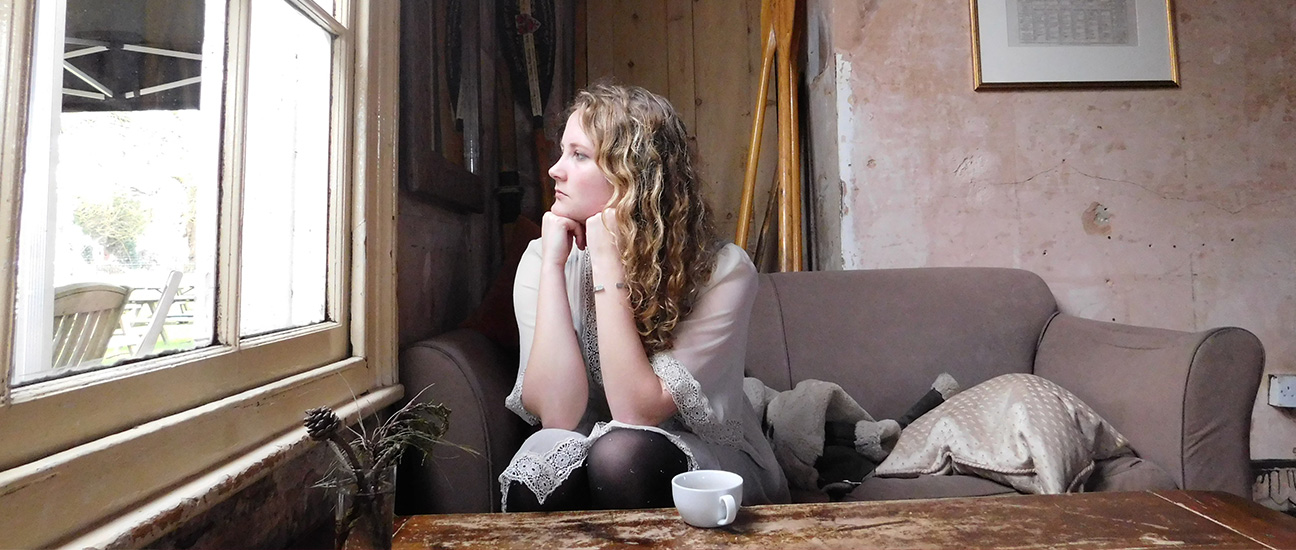- Home |
- Search Results |
- Daisy Johnson on retellings: they are mirrors of the world
Daisy Johnson on retellings: they are mirrors of the world
Daisy Johnson’s haunting debut, Everything Under reinterprets a classical myth, taking the reader into a modern-day England unfamiliar to most. Daisy - the youngest person to ever be shortlisted for the Man Booker Prize - talks about the challenge of retellings.

Retelling is a do over, a return, a one more time with feeling. It is both a dissatisfaction and a fascination with an original, often an original that is so well known it lives just beneath consciousness, like a shared dream or nightmare. Retelling is destruction with a sledgehammer or a chainsaw, bringing the ancient building down right to the ground, digging up the foundations and burning the earth to cleanse it. Afterwards we use new equipment and different materials but the building we begin to create has some similarities to the original: the windows are the same shape, the smell remains. Perhaps we even take an old, half-burnt rafter from the wreckage and use it to hold up the ceiling or piece together broken tiles for the bathroom. We remake and remould, but the original building is still there, like a ghost, speaking through the walls, hidden in the earth. Ghosts, yes. Retelling is a haunted process. We are haunted by the original. Haunted also by every other version which has preceded ours, a long line of retellings which flash behind our own. We will not be exorcised. We will not call in the priests to rid us of the ghosts. Without them our work cannot come to life.

We remake and remould, but the original building is still there, like a ghost, speaking through the walls, hidden in the earth.
When I first decided I wanted to write the novel which would become Everything Under the only thing I knew was that I wanted to retell a myth. I’d done retellings before, in my collection Fen, but I wanted the challenge of something longer, something with twists and turns. The myth I settled on was dark and violent, filled with fate and magic and prophecy. It seemed to belong so entirely to its own time. I wonder if, perhaps, in those early days of thoughts about the project I was overcome by a sort of blood lust, an excitement about the destruction which retelling comes with. I was ready with my hammer and my chainsaw. I did not yet have plans for the building I would work on once I had knocked the old one to the ground. I was arrogant. Of course. Every writer needs a degree of arrogance to begin, to think: yes, I can do this. I wonder if retelling takes even more arrogance than that, an unspoken belief that perhaps we can do better. I have lived and fought and loved and battled with this novel for four years. I have carried it around with me, dreamt about it, talked and thought and worried endlessly about it. At times it felt as if that old building was screaming, refusing to let go of even a nail or door handle. At times it was my ineptitude, my own fumbling forward, trying to find the right way to tell this story which is both old and new. In the end the destruction of retelling was also mirrored in my writing process. There are enough deleted drafts and words and sentences and chapters to make up two or three whole, bad, other novels. Working on my next project is not the same. Perhaps I have improved, sharpened my craft. Or perhaps retelling – at least for me – needs a method of fumbling, of knocking down one wall only to rebuild it instantly, of working in the dark and in the dark and in the dark until, finally, there, a scratch of light.

They enable us to say something from the corner of our mouths, to glance at things out of the side of our eyes, to point one way but mean the other.
There have always been retellings – our thirst for renewal and return is not new – but recently it seems as if there might be more than ever. This year both Pat Barker and Michael Hughes retold The Iliad in entirely different ways; Sophie Mackintosh and Preti Taneja reworked King Lear and Madeleine Miller gave Circe a new voice. Why in this time are writers returning again and again to retellings? Why are we now embracing the idea of the copy and the double, the creature both the same and entirely different? Retellings are mirrors of the world, even as they look backwards they are also looking outwards. They enable us to say something from the corner of our mouths, to glance at things out of the side of our eyes, to point one way but mean the other. They enable us to take on voices which, in the originals, speak rarely or are entirely speechless. Here we take control, we lay down the law. As Briseis says in Pat Barker’s Silence of the Girls: ‘Now, my own story can begin.’
Sign up to the VINTAGE Books newsletter
By signing up, I confirm that I'm over 16. To find out what personal data we collect and how we use it, please visit our Privacy Policy.